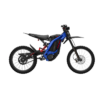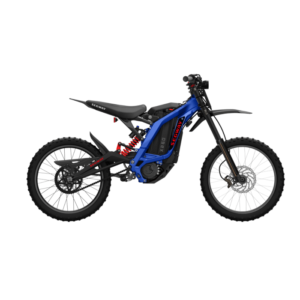Common Mistakes to Avoid When Using a 4 Piston Bleed Block
When it comes to maintaining your bike’s hydraulic disc brakes, using a 4 piston bleed block is a crucial step in ensuring proper brake function. This small but essential tool helps keep the pistons in place while bleeding the brakes, preventing misalignment and ensuring a smooth braking experience. However, many people make avoidable mistakes when using a bleed block, leading to issues like improper brake function, fluid contamination, and even long-term damage to the braking system. Common Mistakes to Avoid When Using a 4 Piston Bleed Block
In this blog, we will discuss some of the most Common Mistakes to Avoid When Using a 4 Piston Bleed Block and provide tips on how to use it properly for optimal performance.
1. Not Using a Bleed Block at All
One of the biggest mistakes people make is skipping the use of a bleed block altogether. When bleeding hydraulic brakes, the pistons can move inward if there’s no block to keep them in place. This can lead to uneven piston positioning and brake pad misalignment, which affects braking efficiency.
How to Avoid This Mistake:
- Always use a 4 piston bleed block whenever you are bleeding your brakes.
- If you don’t have a proper bleed block, avoid using makeshift substitutes like cardboard or plastic, as they may not provide the required rigidity.
2. Using the Wrong Bleed Block Size
Not all bleed blocks are the same size, and using the wrong one can cause issues. A 4 piston bleed block is designed specifically for 4-piston calipers, whereas a 2 piston bleed block is meant for 2-piston calipers. Using an incorrect size can lead to improper piston spacing.
How to Avoid This Mistake:
- Check your brake system specifications before selecting a bleed block.
- Ensure the block fits snugly between the pistons and doesn’t allow unnecessary movement.
3. Improperly Inserting the Bleed Block
Some users do not fully insert the bleed block into the caliper, which can prevent the pistons from being fully retracted. This results in uneven bleeding and may cause brake pad rubbing.
How to Avoid This Mistake:
- Before starting the bleed process, gently push the pistons back into the caliper.
- Ensure that the bleed block sits flush and does not move during the bleeding process.
4. Forgetting to Clean the Bleed Block and Surrounding Area
Brake fluid contamination is a serious issue, and failing to keep your bleed block and surrounding components clean can introduce dirt and debris into the hydraulic system.
How to Avoid This Mistake:
- Always clean the bleed block before inserting it.
- Wipe down the caliper area with isopropyl alcohol or brake cleaner before bleeding.
- Use gloves to prevent oil or dirt from transferring onto the bleed block or caliper.
5. Over-Tightening or Under-Tightening the Bleed Block
Some people force the bleed block too tightly into the caliper, which can cause damage, while others leave it too loose, allowing movement during bleeding.
How to Avoid This Mistake:
- Insert the bleed block firmly but gently, ensuring it is secure without excessive force.
- If your bleed block comes with a retention pin or clip, use it as instructed.
6. Bleeding the Brakes with the Bleed Block Removed Too Early
Some riders remove the bleed block before completing the bleeding process, thinking it is no longer necessary. However, removing it too soon can cause the pistons to move out of position, leading to an uneven brake feel.
How to Avoid This Mistake:
- Keep the bleed block in place until the bleeding process is fully complete.
- Remove it only when you are ready to install the brake pads.
7. Using a Worn-Out or Damaged Bleed Block
A damaged or heavily used bleed block may not hold the pistons properly, leading to misalignment and ineffective bleeding.
How to Avoid This Mistake:
- Regularly inspect your bleed block for cracks, wear, or deformations.
- Replace the bleed block if it shows signs of damage.
8. Not Repositioning the Brake Lever Properly
Failing to position the brake lever correctly when using the bleed block can lead to improper bleeding, causing spongy brakes or inconsistent performance.
How to Avoid This Mistake:
- Always position the brake lever parallel to the ground before bleeding.
- Follow the manufacturer’s recommendations for brake lever positioning.
9. Rushing the Bleeding Process
Bleeding hydraulic brakes requires patience. If you rush through the process, you might not remove all air bubbles, which can lead to a spongy brake feel.
How to Avoid This Mistake:
- Take your time and follow a step-by-step approach.
- Use the correct bleeding technique recommended by your brake manufacturer.
10. Not Testing the Brakes After Bleeding
After finishing the bleeding process, some people immediately go for a ride without properly testing the brakes. This can be dangerous if the brakes are not working correctly.
How to Avoid This Mistake:
- Before riding, test the brakes by squeezing the brake lever multiple times to ensure a firm response.
- Check for leaks, air bubbles, or unusual noises.
Final Thoughts
Using a 4 piston bleed block correctly is a simple but crucial step in maintaining your hydraulic disc brakes. Avoiding these common mistakes will help you achieve optimal braking performance, prevent damage to your braking system, and ensure a safer ride. By taking the time to follow proper bleeding procedures and using the right tools, you can extend the life of your brakes and enjoy smooth, responsive stopping power.











Add comment